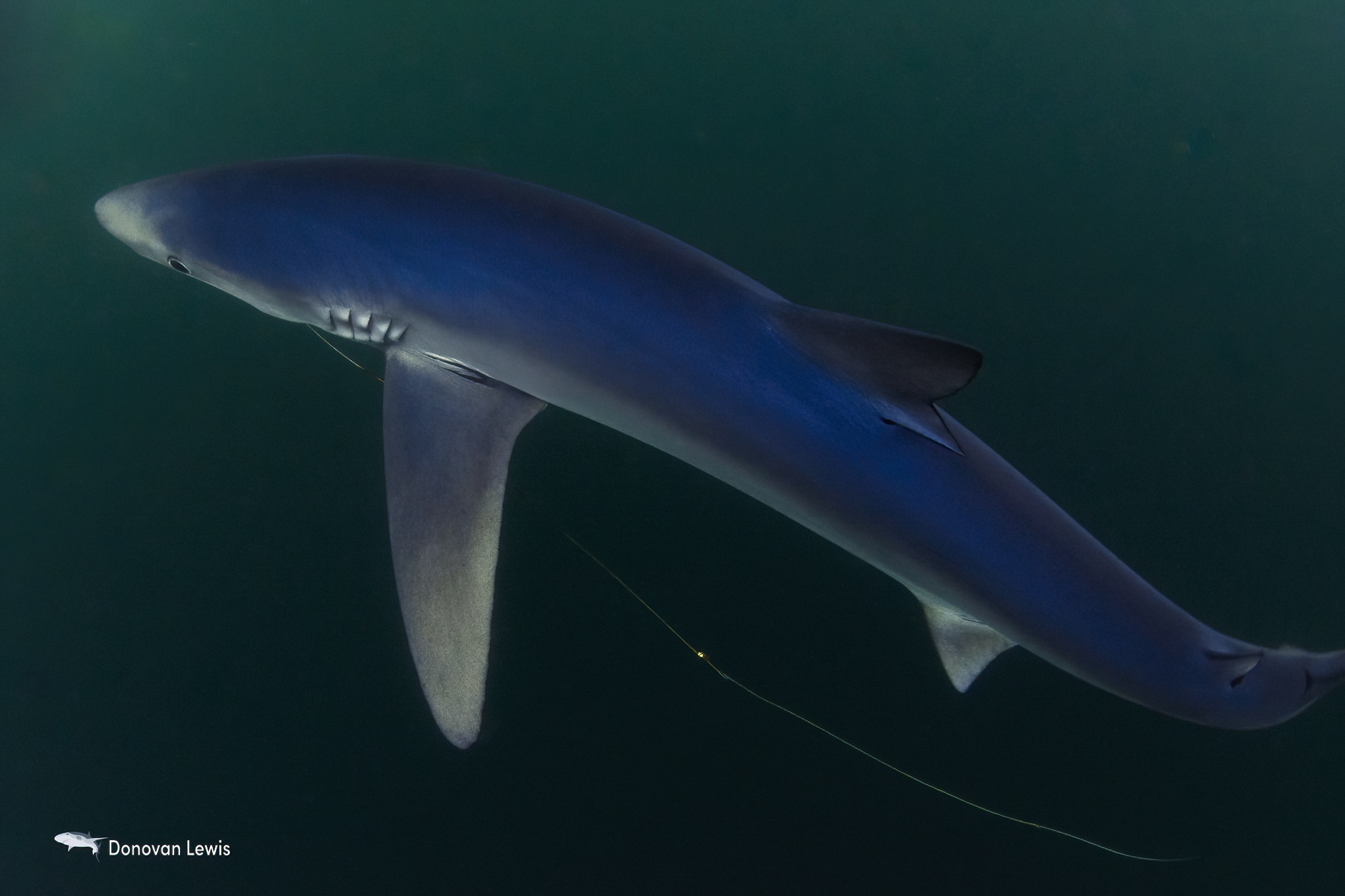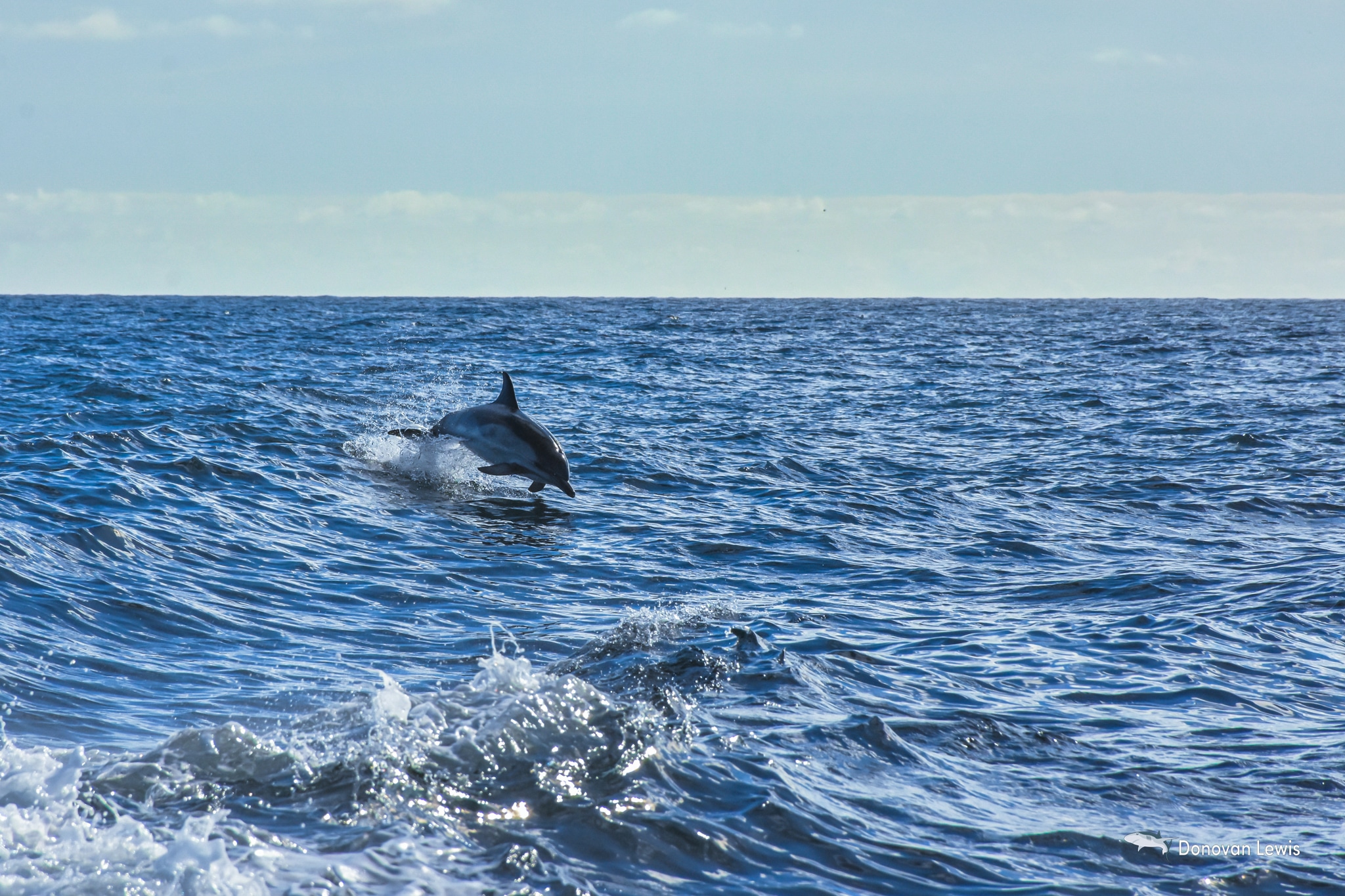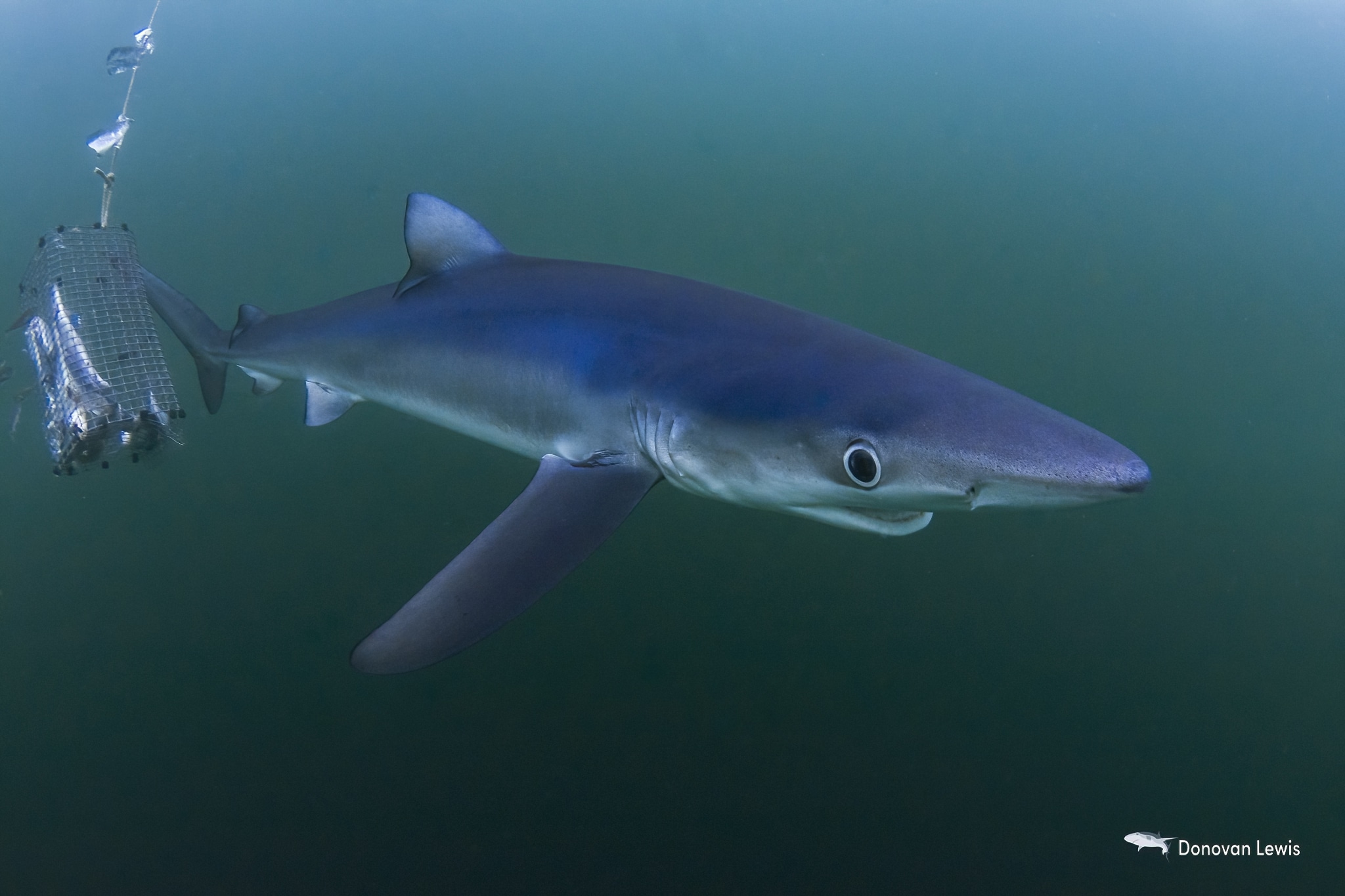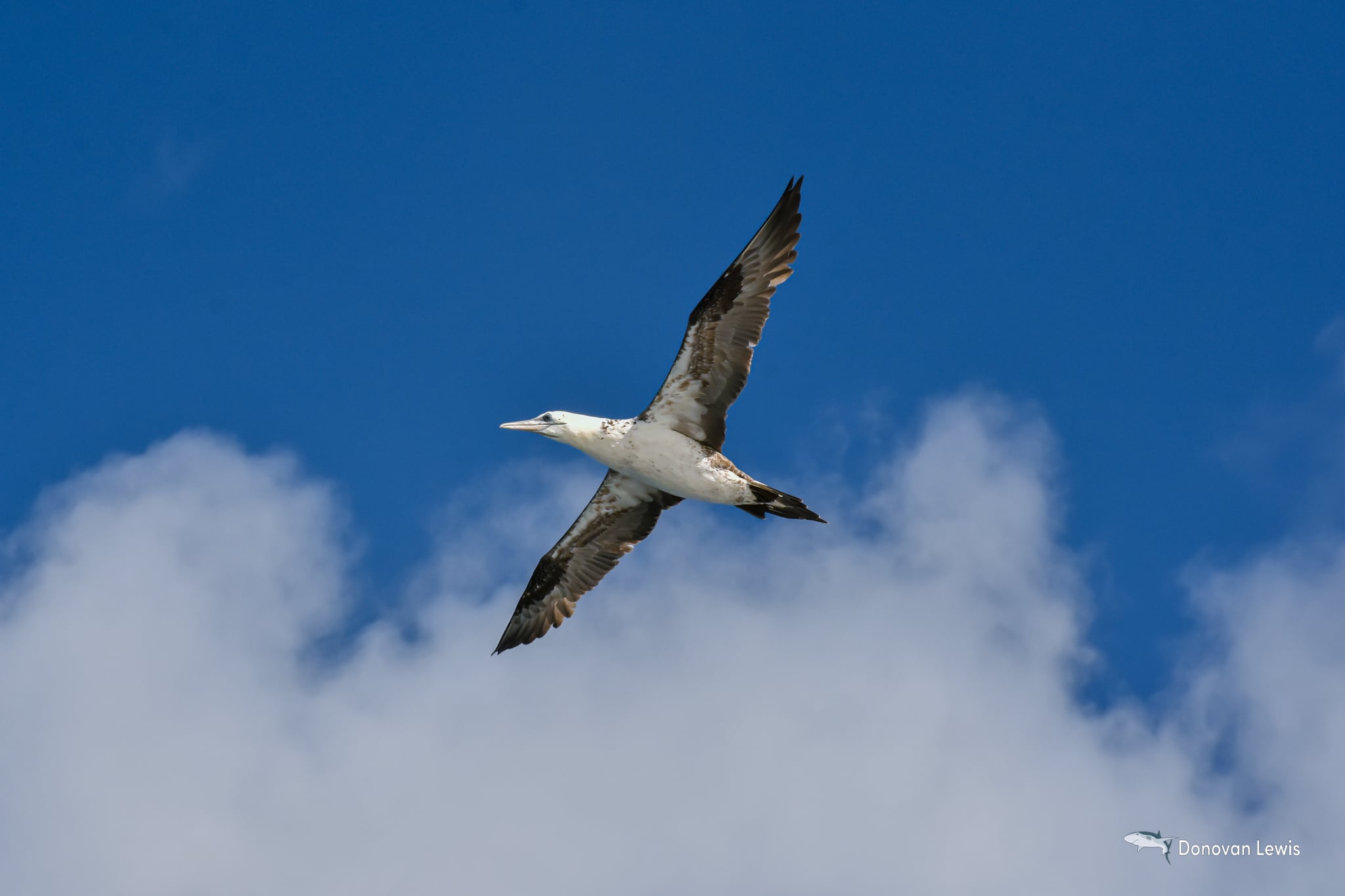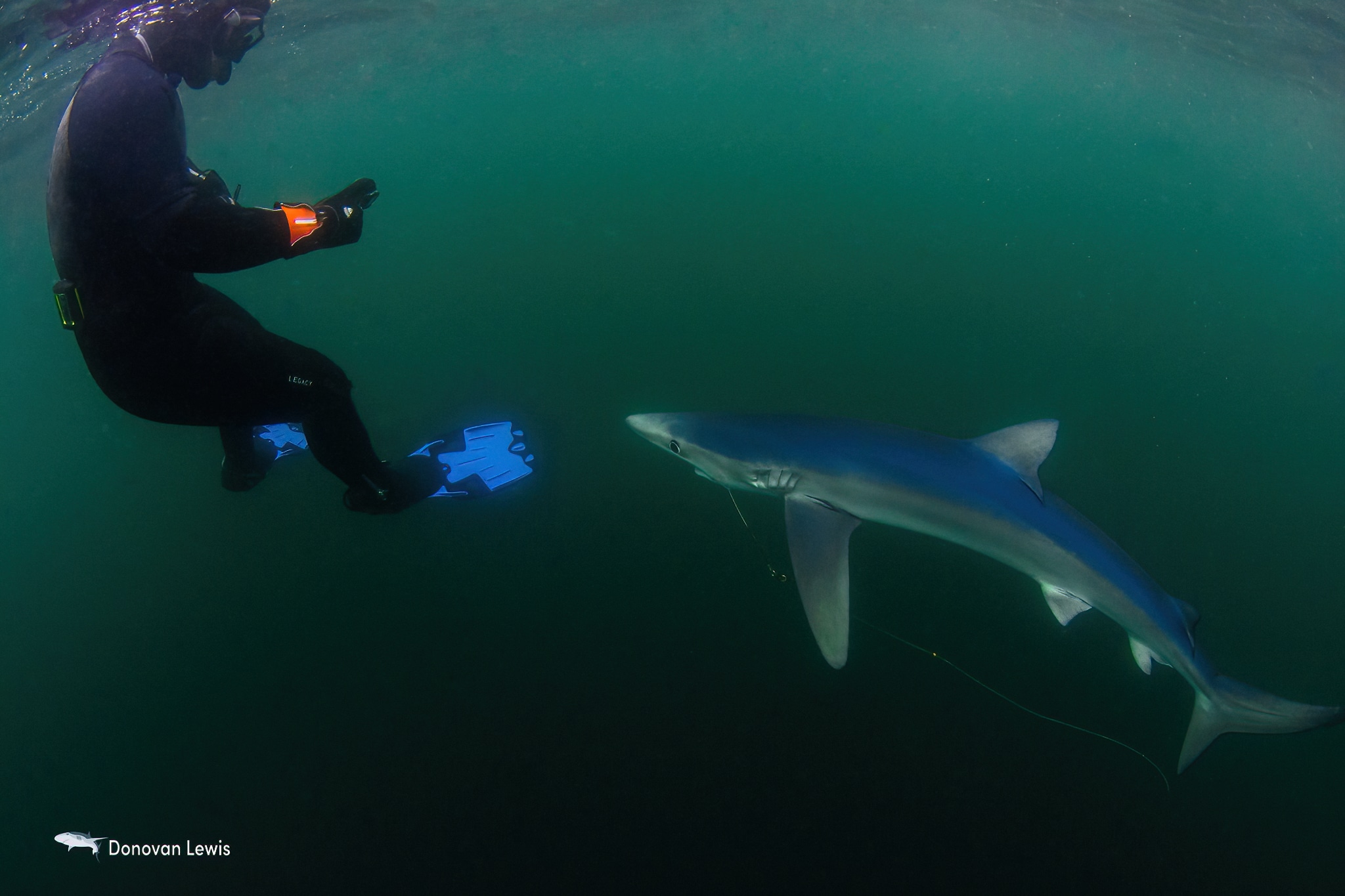News
A day in the blue with Celtic Deep

There are some truly breathtaking wildlife experiences to be had on our planet and some would be surprised what you can experience right here in the UK. For years I’ve dreamed of swimming with a true open ocean wanderer in the UK, the Blue Shark.
Blue Sharks are a true open ocean specialist, agile and adaptable, they specialize mainly on eating fish such as Herring, Sardine and Mackerel, but they do make vertical migrations to the depths to feed on Squid in deeper waters. It has been shown that these incredible Sharks spend a large amount of time in deep water riding currents and thermoclines but will still return to the surface waters to prevent body cooling. Unfortunately, the Blue Shark is the most heavily fished Shark species in the world, which has unfortunately led to this species being put on the IUCN List of Threatened Species and is currently listed as Near Threatened.
Back in 2017 I was lucky enough to do a dive with Blue Sharks when I was out in South Africa with Shark Explorers, who are based in Simons Town, False Bay. It was actually on this dive where I decided I really wanted to be a wildlife photographer/cameraman. Ever since this dive I have been itching to get back in the water with these truly incredible animals, but not only did I want to be back in the water with them, but I also wanted to introduce my Fiancée Charlotte to them as well. Well in September of 2021 I managed to do just that.
Now unfortunately, our trip which was originally booked for mid-August had been cancelled due to bad weather, which is what tends to happen when diving in the UK. Obviously going out in a large swell is no fun for anyone so we eagerly waited for our trip to come up a few weeks later.
Myself, my partner Charlotte, and a friend from work Dom, set off from Ellesmere Port at around 1:00am to be in Pembrokeshire in time for ropes up at 8:00am; we had to be at the dock for 7:30am to put all our equipment on the boat before departing for the deep. We arrived an hour early, so we had a quick rest in the car and got into our wetsuits ready for the trip and placed all our camera and snorkelling equipment beside the dock ready for the boat’s arrival. Here we were met by others on the trip with the likes of Francesca Page and David Millard who are both artists and Underwater Photographers as well as Kaushiik Subramaniam and Robin Fischer, both of whom are Underwater Photographers and filmmakers. This is also where we of course met the Celtic Deep crew: Richard, who is the one of the founders of Celtic Deep and also the Maldives Whale Shark Research Program, Liam, an underwater Photographer and Filmmaker and Celtic Deep Deckhand, and Emma, a Marine Biologist doing research on Sharks and other marine life in the deep.
At 8:00am we departed for the deep, passing Skomer and Skokholm Island on our way out. Before the trip we were told that they had been recently seeing a large amount of dolphin and bait balling activity, and nature really didn’t disappoint with huge numbers of Common Dolphins and the calves bow riding the boat. Emma who is doing some research and conservation work on board took this opportunity to count the dolphins and their calves for local research. The dolphins seemed to come from every direction with seeming endless numbers of them. We got to witness several bait balls on the way out with Dolphins herding fish against the surface from below along with Gannets diving from above and the odd Skua flying in to investigate the commotion.
After around 2 hours of steaming out we finally reached the area known as the Celtic Deep. This is an area between the UK and Ireland and is an area in the seafloor that reaches a depth of around 100 Metres. It’s an area that attracts a whole range of open ocean predators from Dolphins, Tuna, Blue Sharks, occasional Mako Sharks and even Whales.
Once we had reached the Deep, Richard started chumming for the Sharks using a mixture of Herring and other fish which he mixed with sSalt water and threw the fluid overboard. They also placed a metal cage with Herring inside around 3 Metres below the surface and attached to the rope were pieces of tin foil and other reflective material in what Richard referred to as a Shark Mobile. This was used to keep the Sharks interested and keep them around the boat. Liam, an Underwater Photographer and part of the Celtic Deep’s Crew, jumped in to watch the deep water and surrounding area for approaching Sharks to let everyone know to start getting ready if one approached the boat.
As Richard chummed for Sharks, Emma started setting up her research; she had a machine on board that was taking water samples from around the boat and sending it into a container where she was taking a number of samples for environmental DNA sampling. Essentially this method is used to take a large sample of water from any given area and analyse the sample for traces of DNA that are left in the water column by any animals that have been in that area recently. This is used to gain a potential idea of what has been around recently and potentially in what number. It was amazing to see such work taking place on board the boat and with all members of the crew helping however they could.
Whilst we were waiting for the Sharks, Charlotte and I were sat facing each other chatting, but we were constantly looking over each other’s shoulders just in case one of us saw something behind the other we could let each other and the rest of the boat know. Mid conversation I, by sheer luck, happened to look at a spot of Water where right at that moment a Minke Whale appeared and took a breath. Minkes are known to be shy, so it didn’t hang around long before diving again to re-surface some 100metres away seconds later. Now due to promises being given of animals to be seen through my time diving I always go on trips like these with the notion that we won’t see anything and then that way if we do see something its always so much better, and we were not disappointed.
After 90 minutes or so of waiting, a fishing rod that had been deployed with a herring on a line to a depth of around 30 metres started screaming. David turned and said: “That’s a Shark” which Richard confirmed, seconds later Liam’s head came up and he shouted “Shark! Shark! We have a Shark.” It was then I saw the tell-tale electric blue colour of a Blue Shark. Myself, Charlotte, and Dom had been in our wetsuits since 7am so were told to get ready as we were going in first.
We finished gearing up and jumped in. The water visibility was at most around 5 metres so we couldn’t immediately see the Shark but then out of nowhere the unmistakable silhouette of a shark came into view. Its deep blue electric coloration glowed brightly, its curiosity was equaled by its cautious nature and we were told not to duck dive down to the sharks and to stay on the surface at first to allow the animals to gain confidence in us. Therefore we went in small groups at first to make sure we didn’t scare the animal away, but once everyone had been in, we would then be able to all get in the water. The Shark made continuous passes getting closer to us and checking us and the camera out with its large endearing eyes. At one point I looked over to Charlotte to make sure she was OK when she told me that the Shark was on the bait cage. I put my head down to have the shark literally 2 inches in front of me; it came in close to have a look and went over to Charlotte, with her literally having to arch her body to get out of its way. After around 15 minutes Richard called us back to the boat as the second group were ready to get in, we swam back to the boat with smiles, hugs and high fives to go round.
We then watched as the second group swam with the Shark for few minutes before it decided to leave. At first we were a little confused as to what caused it to leave before noticing a hub of activity in the distance. It was a pod of Common Dolphins heading in our direction. Richard told the group: “Dolphins, behind you! Heads Down!” The group lowered their heads and were met by a pod of dolphins swimming all around them. Francesca said when she got out that she had never seen a dolphin underwater and you could see how happy she and the rest of the group were through their excitable expressions and happy tears.
Unfortunately, due to the Shark leaving we did have to wait around for 30 minutes before getting back in but it so worth the wait with not one but two Sharks showing up. There was a large female around 2.5 metres in length and a smaller 1.5-2 metre male. It was noticed almost immediately by both Liam and Emma that the large female had a hook lodged in her mouth and was also trailing fishing line behind her. Emma stated that the hook was barbless which is what should be used for recreational Shark fishing because if the Shark escapes, then the hook will fall out, but unfortunately the line that was attached was creating drag thus keeping the hook firmly in place. The large female may have had a large hook in her mouth, but this didn’t influence her curiosity as she just couldn’t get enough of us, she did pass after pass bumping into cameras as she went.
After what felt like mere minutes was actually around 40 we were asked to get back on board as the sun was beginning to hang low and we needed to head back to port, but before we did Emma grabbed a knife and went after the large female shark in the hopes of freeing her from the line that was attached to the hook. Robin followed to get some footage for his Masters film that he was making. 10 seconds later Emma surfaced full Rocky style with her hand up cheering with the line hanging from her hand. Emma had succeeded in freeing the shark. She stated that with the line now free it will allow the barbless hook to fall out in its own time which was a huge relief to hear.
The journey back took around 2 hours with the sun setting over the Smalls Lighthouse, the most westerly lighthouse in the UK. Me, Charlotte, and Dom were all aware that when we got back to shore that we would still have around 5 hours of travelling before we got home. Once back on shore we said our goodbyes and made our way to the car. The drive was clear, with me and Charlotte doing half a journey each. We returned home at 1:00am a near full 24 hours after leaving to head down but the exhaustion was worth every minute spent with the incredible animals and crew alike.
In summary the day out with Celtic Deep was incredible, a day where UK Marine life was a true spectacle. We experienced something that up until recently not many people knew about in this part of the UK, a place where Ocean wandering predators gather to take advantage of rich feeding grounds. The wildlife, facilities and service were 10/10, with crew that were accommodating and professional from start to finish. This is somewhere that I am keen to return to and look forward to another day out in the Blue with Celtic Deep.
For more information about Celtic Deep visit their website by clicking here.
Marine Life & Conservation Blogs
Book Review: Shells of the World

Shells of the World: A Natural History by M.G. Harasewych
Shells of the world is a guide to the world of marine, shelled molluscs. And what a varied and interesting world it is. Some of my favourite things to find on a dive are detailed in this book, including disco clams (or Electric File Clams as they are correctly names), the cephalopods, giant clams and sea hares. There are also many on my wish list, top of which is the Nautilus.
Each chapter provides a detailed description of the species, along with beautiful images. You can dive deeper and discover where they live, both with global distribution and the habitat they prefer. Learn about their diet, reproduction and diversity.
Having dipped in and out of this lovely book over the past few weeks, it has inspired me to learn more about this group of animals that we see on most divers, wherever we are in the world. Some of the shells are incredibly intricate and beautiful. I have always agreed with never collecting, or touching, marine life. The description of a certain set of cone shells should be a warning to those that are happy to pick up marine life! One of the cone shells has a local name called the cigarette snail. Why? Because once the venom is in your system from this animal, you only have time to smoke one cigarette before the affects of the venom are fatal!
What the publisher says:
Mollusks are invertebrate animals with a remarkable natural history and a rich fossil record, and their shells are prized for their breathtaking variety and exquisite beauty. Shells of the World provides a wide-ranging look at the incredible diversity of marine mollusks. An informative introduction outlines the lineages covered, followed by a directory section, split into classes, that profiles a broad selection of different taxa to give a sense of their sheer numbers and variety.
- Features hundreds of beautiful color photos, depicting both the live animals and their shells
- Discusses mollusk evolution, anatomy, life cycles, behavior, and ecology
- Describes unique characteristics, distribution, habitat, and size
- Provides valuable insights into the conservation of the world’s marine mollusks
- Ideal for malacologists and shell collectors everywhere
About the Author:
M. G. Harasewych is research zoologist emeritus and former curator in the Department of Invertebrate Zoology at the Smithsonian Institution’s National Museum of Natural History. A fellow of the American Association for the Advancement of Science, he is the author (with Fabio Moretzsohn) of The Book of Shells: A Life-Size Guide to Identifying and Classifying Six Hundred Seashells.
Book Details
Publisher: Princeton University Press
Hardcover
Price: £25
ISBN: 9780691248271
Published: 9th April, 2024
Gear News
Go anywhere with Stahlsac
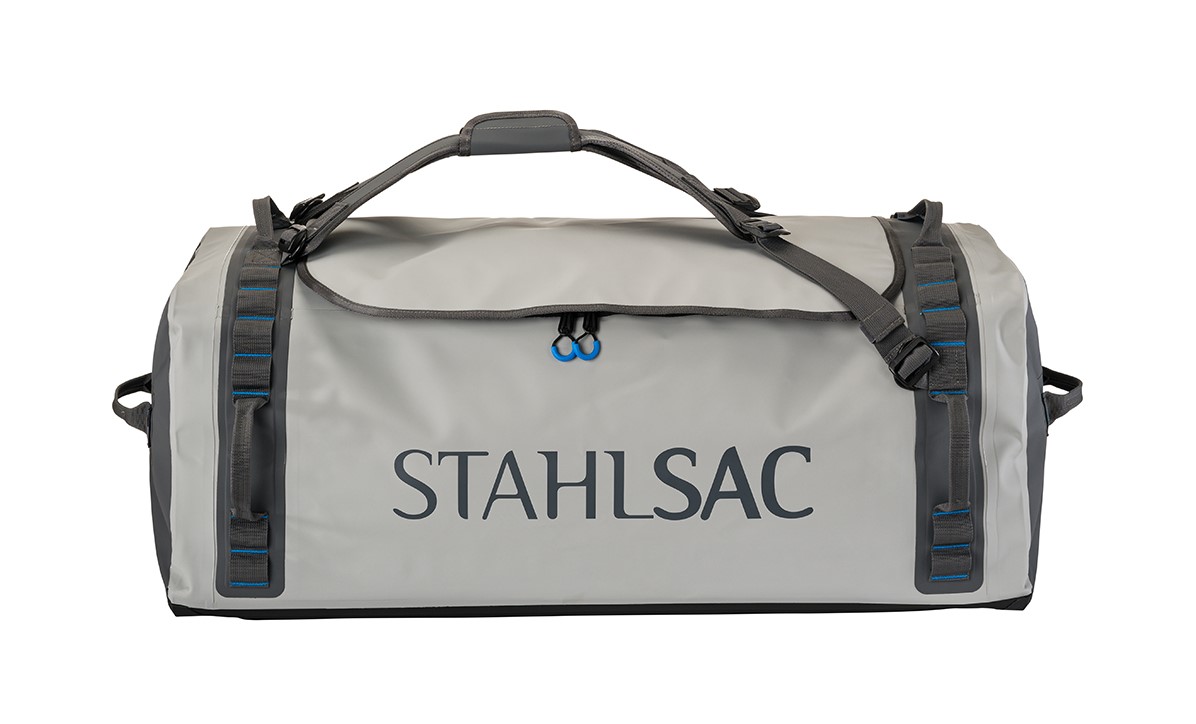
Stahlsac dive bags and travel luggage are built for our community of divers, surfers, kayakers and outdoor explorers who need bags that are constructed with durability, toughness, and 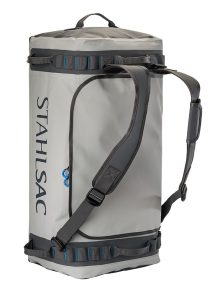 the highest quality the industry has ever seen. We were founded by one man determined to build better watersports and dive bags, and today, that mission is carried on by many. Adventure doesn’t just present itself; it requires discovery. When we design dive bags, we make sure they are tough enough for you to explore in all conditions—warm and cold, wet and dry—to the nearest and farthest reaches of the earth. And for those times you want to push the boundaries of adventure, Stahlsac dive bags make sure you can truly GO ANYWHERE.
the highest quality the industry has ever seen. We were founded by one man determined to build better watersports and dive bags, and today, that mission is carried on by many. Adventure doesn’t just present itself; it requires discovery. When we design dive bags, we make sure they are tough enough for you to explore in all conditions—warm and cold, wet and dry—to the nearest and farthest reaches of the earth. And for those times you want to push the boundaries of adventure, Stahlsac dive bags make sure you can truly GO ANYWHERE.
Abyss Duffels
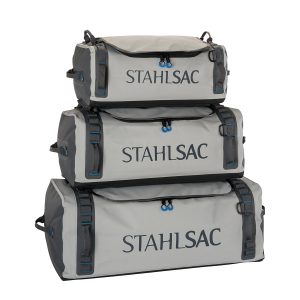 Made to be your partner-in-crime on every adventure, Stahlsac’s Abyss Duffels protects your gear from Mother Nature’s worst. Tough and 100% waterproof with double-TPU nylon material that shrugs off daily wear-and-tear, and RF-welded seams further boost the bag’s potential for lifelong exploring. Get Wet. Get Lost. Go Anywhere with Abyss.
Made to be your partner-in-crime on every adventure, Stahlsac’s Abyss Duffels protects your gear from Mother Nature’s worst. Tough and 100% waterproof with double-TPU nylon material that shrugs off daily wear-and-tear, and RF-welded seams further boost the bag’s potential for lifelong exploring. Get Wet. Get Lost. Go Anywhere with Abyss.
- A weatherproof duffel for trips, travel, and adventure
- Ultra-durable double-TPU nylon protects your gear
- Material repels water and keeps your equipment dry
- RF-welded seams are flush, tough, and waterproof
- Removable straps transform duffel into backpack
- Zippered internal stow compartments carry essentials
- External zippered flap is easy to open and close
- Welded external handles make transporting a breeze
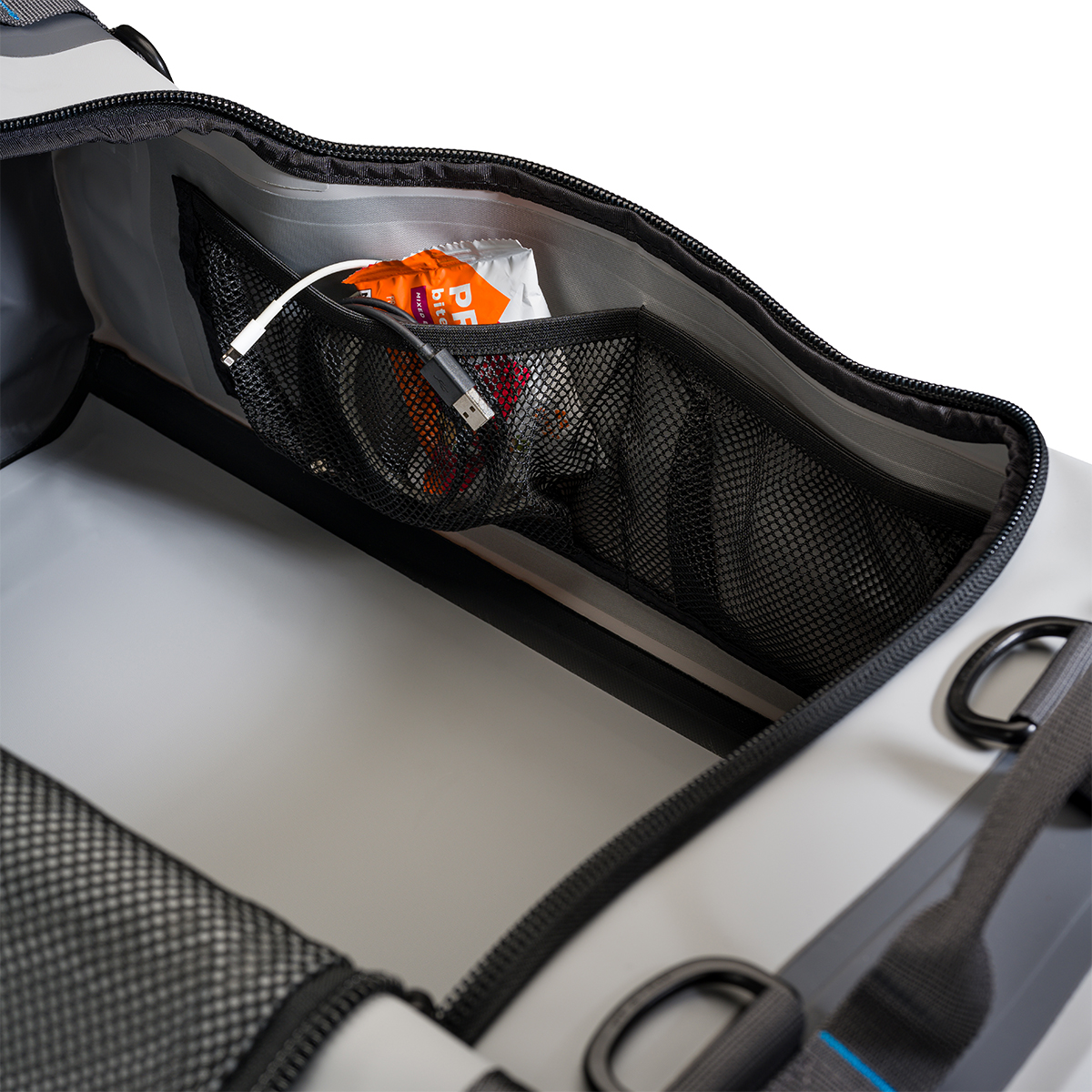
Panama Mesh Backpack
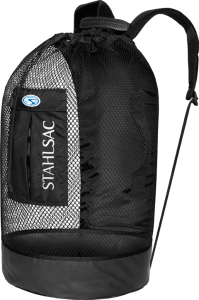 The most copied design in scuba diving, the Stahlsac Panama Mesh Backpack is the “original” design and features two high-density foam padded shoulder straps, extra durable polyester mesh, duffel bag handles and our unique zippered dry pocket inside that combines with a wet pocket outside. The bottom’s built from reinforced 18-gauge PVC nylon to combat the wear and tear of your active coastal lifestyle, and, as a bonus in every bag, we supply a 12″ x 12″ mesh drawstring satchel for extra stowing utility. Pack up your beach kit and go.
The most copied design in scuba diving, the Stahlsac Panama Mesh Backpack is the “original” design and features two high-density foam padded shoulder straps, extra durable polyester mesh, duffel bag handles and our unique zippered dry pocket inside that combines with a wet pocket outside. The bottom’s built from reinforced 18-gauge PVC nylon to combat the wear and tear of your active coastal lifestyle, and, as a bonus in every bag, we supply a 12″ x 12″ mesh drawstring satchel for extra stowing utility. Pack up your beach kit and go.
- Density foam padded shoulder straps
- Outside wet/dry pockets
- 2 Carry handles
- Tough, snag-resistant polyester mesh
- Reinforced PVC bottom
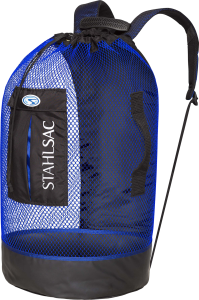
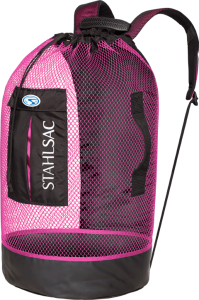
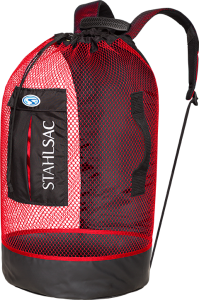
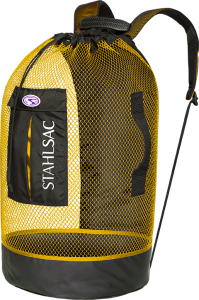
For more information about Stahlsac bags, visit www.stahlsac.com/dive-bags.
Sea & Sea is the home of Stahlsac and other leading diving brands in the UK.
-

 News3 months ago
News3 months agoCapturing Critters in Lembeh Underwater Photography Workshop 2024: Event Roundup
-

 Marine Life & Conservation Blogs3 months ago
Marine Life & Conservation Blogs3 months agoCreature Feature: Swell Sharks
-

 Gear Reviews4 weeks ago
Gear Reviews4 weeks agoGEAR REVIEW – Revolutionising Diving Comfort: The Sharkskin T2 Chillproof Suit
-

 Blogs2 months ago
Blogs2 months agoMurex Resorts: Passport to Paradise!
-

 Blogs3 months ago
Blogs3 months agoDiver Discovering Whale Skeletons Beneath Ice Judged World’s Best Underwater Photograph
-

 News3 months ago
News3 months agoPADI Teams Up with Wellness Brand Neuro to Drive Ocean Change and Create a Blue State of Mind
-

 Gear Reviews3 months ago
Gear Reviews3 months agoGear Review: Oceanic+ Dive Housing for iPhone
-

 Marine Life & Conservation2 months ago
Marine Life & Conservation2 months agoSave the Manatee Club launches brand new webcams at Silver Springs State Park, Florida


